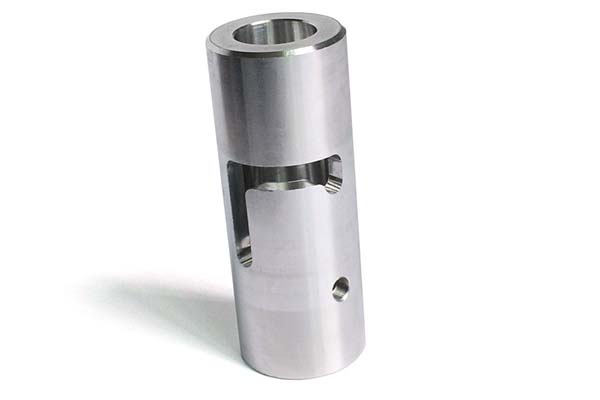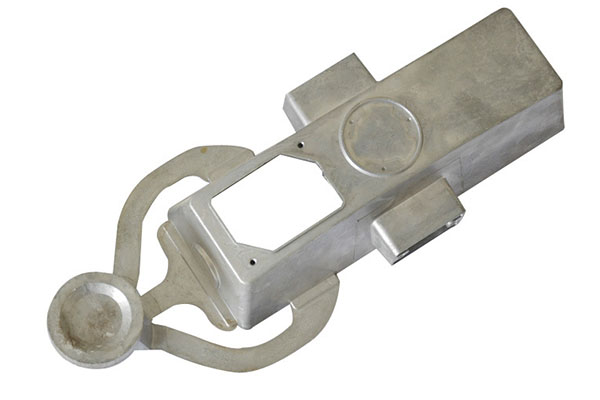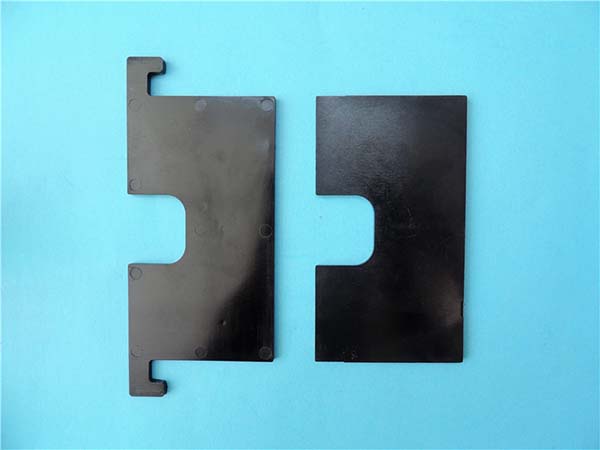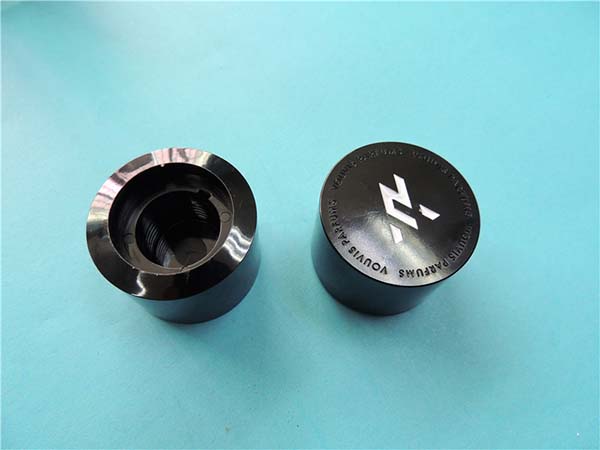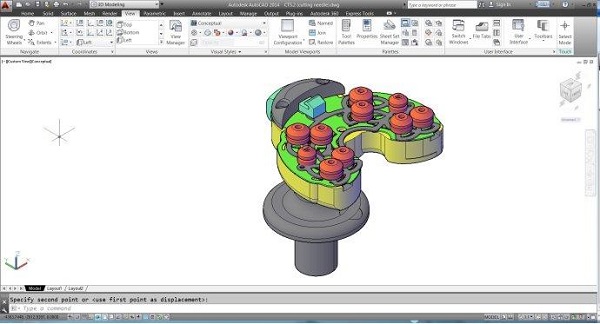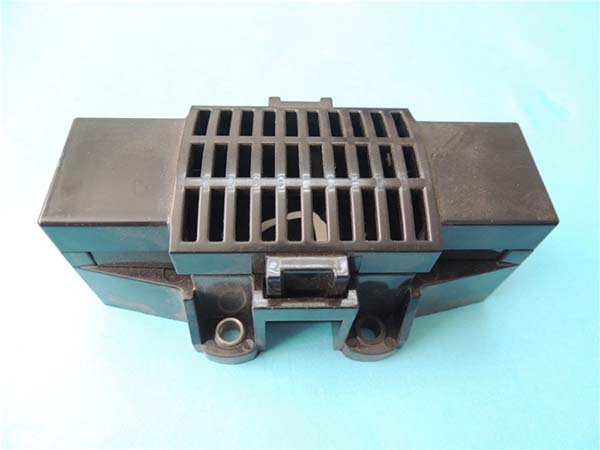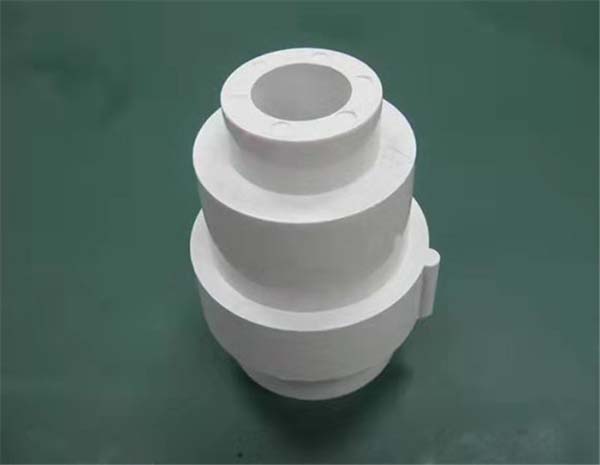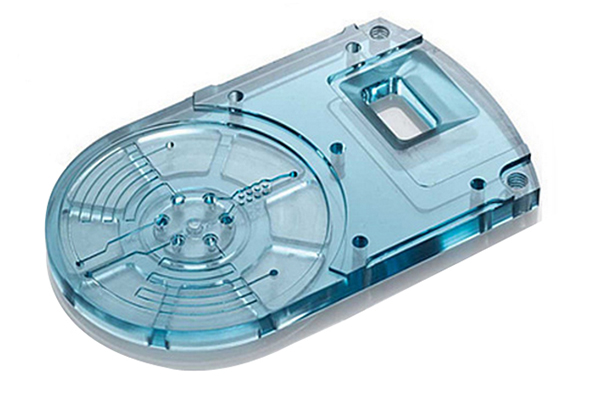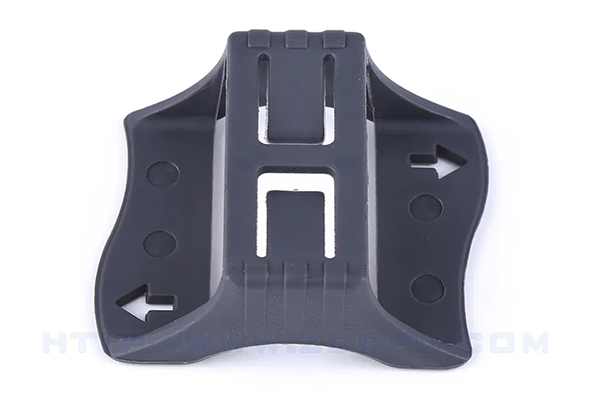1. Introduction: The Lightweight Revolution in Design Prototyping
In an era where product design demands a balance of strength, weight, and innovation, carbon fiber rapid prototyping has emerged as a transformative technology. By leveraging the unique properties of carbon fiber—exceptional strength-to-weight ratio, corrosion resistance, and design flexibility—this approach allows engineers to bridge the gap between conceptual designs and functional prototypes faster than ever. This article explores how carbon fiber rapid prototyping is redefining design workflows, empowering industries from aerospace to consumer goods with unprecedented speed, precision, and material mastery.
In the past, traditional prototyping materials like metals and plastics had their limitations. Metals, although strong, are often heavy, which can be a major drawback in applications where weight reduction is crucial, such as in the aerospace and automotive industries. Plastics, on the other hand, may not offer the high strength required for certain demanding applications. Carbon fiber, with its carbon content typically above 90%, provides a revolutionary solution. It has a density of around 1.7 - 1.8 g/cm³, which is much lighter than aluminum (about 2.7 g/cm³) and steel (around 7.8 - 8.0 g/cm³), yet it can have tensile strengths exceeding 4000 MPa in high - performance grades. This remarkable strength - to - weight ratio makes it an ideal material for rapid prototyping, enabling the creation of prototypes that are both lightweight and durable.
The process of carbon fiber rapid prototyping has also evolved significantly. with advancements in technology, new methods have emerged that can produce high - quality carbon fiber prototypes in a fraction of the time. These improvements have not only made the prototyping process more efficient but have also opened up new possibilities for design exploration. For Yigu Technology example, in the past, complex geometries were difficult to achieve with carbon fiber prototyping, but now, with advanced 3D printing and molding techniques, designers can create intricate and highly customized prototypes with ease.
2. The Technical Core: How Carbon Fiber Rapid Prototyping Works
2.1. Core Technologies for Carbon Fiber Prototyping
Carbon fiber rapid prototyping is made possible by integrating several advanced manufacturing technologies, each with its unique process and advantages:
- Fused Deposition Modeling (FDM): This 3D - printing technique extrudes carbon fiber - reinforced thermoplastics, such as acrylonitrile - butadiene - styrene (ABS) or polyether - ether - ketone (PEEK). The process starts with a digital 3D model that is sliced into thin layers. A heated nozzle then melts the carbon fiber - filled filament and deposits it layer by layer according to the design. The typical layer thickness ranges from 0.05 to 0.3mm. FDM is well - suited for creating functional prototypes. For Yigu Technology example, in the production of drone frames, the use of carbon fiber - reinforced materials through FDM can result in a lightweight yet strong structure. The tensile strength of parts made by FDM with carbon fiber - reinforced materials can reach up to 80 MPa, providing the necessary durability for the high - stress conditions during drone flights.
- Selective Laser Sintering (SLS): SLS is another additive manufacturing method. It uses a high - power laser to sinter carbon fiber - infused nylon powders. The laser scans the powder bed, melting and fusing the powders together in the areas defined by the 3D model. This process allows for the creation of intricate geometries with a feature resolution of up to 0.1mm. The material density of the final product can reach 95%, making it ideal for load - bearing components. In the automotive industry, brackets made through SLS with carbon fiber - nylon composites can withstand high mechanical loads while keeping the weight down, contributing to improved fuel efficiency and overall vehicle performance.
- Resin Transfer Molding (RTM): RTM is a liquid - composite - molding process. First, a carbon fiber preform is placed in a closed mold. Then, a liquid resin is injected into the mold under pressure. The resin impregnates the carbon fiber preform, and after curing, a high - precision part is obtained. The surface roughness of parts made by RTM can be as low as Ra ≤1.6μm. In the aerospace industry, RTM is widely used for manufacturing prototypes of aircraft components. The ability to produce parts with high precision and excellent surface finish is crucial for reducing aerodynamic drag and ensuring the safety and efficiency of aircraft.
2.2. Material Advantages: Why Carbon Fiber Stands Out
Carbon fiber composites offer several distinct advantages over traditional materials like metals and polymers, as demonstrated in the following comparison Yigu Technology table:
| Property | Carbon Fiber Composite | Traditional Metals (Aluminum) | Polymers (ABS) |
| Tensile Strength (MPa) | 500–1,500 | 150–300 | 40–60 |
| Density (g/cm³) | 1.6–2.0 | 2.7 | 1.05–1.2 |
| Thermal Conductivity (W/m·K) | 10–15 | 205 | 0.2–0.3 |
| Design Freedom | High (complex curves) | Moderate (Relying on CNC machining) | High (Insufficient strength) |
Tensile Strength: Carbon fiber composites have an outstanding tensile strength, which is much higher than that of traditional polymers like ABS and significantly higher than some common metals such as aluminum. This high strength allows for the creation of prototypes that can withstand heavy loads without failure, making it suitable for applications in industries like aerospace and automotive, where safety and performance are critical.
Density: With a relatively low density, carbon fiber composites are lighter than metals. This is a significant advantage in applications where weight reduction is crucial, such as in the construction of aircraft, drones, and high - performance sports equipment. Lighter prototypes can lead to improved energy efficiency, faster speeds, and better overall performance.
Thermal Conductivity: While carbon fiber composites do not have the extremely high thermal conductivity of metals like aluminum, their thermal conductivity is still much higher than that of polymers. This property is beneficial in applications where heat dissipation needs to be managed, such as in electronic devices or engine components.
Design Freedom: Carbon fiber rapid prototyping offers high design freedom. Complex curves and geometries can be easily achieved, which is more challenging with traditional metals that often rely on computer - numerical - control (CNC) machining for complex shapes. Although polymers also offer design flexibility, they often lack the strength of carbon fiber composites, making carbon fiber a better choice when both strength and design complexity are required.
4. Industry Applications: Where Carbon Fiber Prototyping Shines
4.1. Aerospace & Defense: Light weighting for Flight
In the aerospace and defense sectors, the demand for lightweight yet high - strength components is non - negotiable. Carbon fiber rapid prototyping has emerged as a game - changer in this regard.
For Unmanned Aerial Vehicle (UAV) components, precision and lightness are crucial. A military drone manufacturer, for Yigu Technology instance, utilized Resin Transfer Molding (RTM) prototyping to create wings with a thickness of just 0.8mm. These carbon fiber wings boasted a dimensional accuracy of ±0.05mm, which is essential for maintaining the drone's stability during high - speed flights. In fact, these wings enabled the drone to maintain stability even at speeds of up to 200 km/h. The use of carbon fiber not only reduced the overall weight of the drone but also enhanced its maneuverability and endurance, as less energy was required to keep it airborne.
When it comes to satellite structures, the extreme conditions of space demand materials with exceptional properties. Carbon fiber - reinforced epoxy prototypes have proven to be up to the task. These prototypes can withstand cryogenic tests at temperatures as low as –196°C. Their thermal expansion coefficients are as low as 1.2ppm/°C. This is critical for components such as precision antenna mounts. In space, temperature fluctuations can be extreme, and even the slightest change in the dimensions of an antenna mount could lead to a loss of signal or inaccurate data collection. Carbon fiber composites, with their low thermal expansion and high strength, ensure that satellite components remain stable and functional in the harsh space environment.
4.2. Automotive & EV: Efficiency Through Lightweight Design
The automotive industry, especially in the realm of electric vehicles (EVs), is constantly striving to improve efficiency. Carbon fiber rapid prototyping offers a path to achieve this goal through lightweight design.
In the case of electric vehicle chassis, reducing weight is directly related to increasing battery range. Carbon fiber subframes prototyped via Fused Deposition Modeling (FDM) have shown remarkable results. Compared to traditional steel subframes, these carbon fiber counterparts can reduce weight by up to 40%. This significant weight reduction, in turn, improves the battery range by approximately 10%. Moreover, these carbon fiber subframes meet the stringent crash - test standards, with the ability to withstand an impact resistance of 50 kN. This combination of weight reduction and high - strength performance makes carbon fiber an ideal material for EV chassis, contributing to longer - lasting batteries and safer vehicles.
For performance parts in the automotive industry, carbon fiber also plays a vital role. A supercar manufacturer used Selective Laser Sintering (SLS) to validate carbon fiber brake caliper brackets. The SLS process allowed for the creation of parts with an impressive concentricity of 0.02mm for rotor alignment. This high level of precision reduced vibration by 30% during braking. Reduced vibration not only improves the driving experience but also enhances the durability of the braking system, leading to better - performing and more reliable high - performance vehicles.
4.3. Consumer Goods: Merging Style and Strength
In the consumer goods market, carbon fiber rapid prototyping has enabled the creation of products that combine style and strength, meeting the demands of modern consumers.
For wearable technology, such as smartwatches, a balance between aesthetics, functionality, and durability is essential. A smartwatch brand utilized RTM to prototype carbon fiber cases. These cases achieved a weight of just 7.8g, which is 30% lighter than titanium cases. Despite their lightweight nature, they offer IP68 water resistance, ensuring protection against water immersion up to a certain depth. Additionally, they have a 1,000 - hour UV resistance, making them suitable for long - term outdoor use. The use of carbon fiber not only enhances the watch's performance but also gives it a sleek and modern look, appealing to consumers who value both style and functionality.
In the sports gear industry, carbon fiber is also making a significant impact. A ski manufacturer used carbon fiber FDM prototypes to test different edge profiles. By adjusting the fiber layup, they were able to reduce flex by 15%, which improved the ski's snow grip. This led to better - controlled turns and a more enjoyable skiing experience. Moreover, the use of rapid prototyping accelerated the time - to - market by 3 months. Carbon fiber's high strength - to - weight ratio allows for the creation of sports gear that is both lightweight and durable, enhancing the performance of athletes and sports enthusiasts alike.
4.4. Medical Devices: Customization at Scale
The medical device industry has also benefited greatly from carbon fiber rapid prototyping, especially in the area of customization.
For orthopedic implants, patient - specific designs are becoming increasingly important. A patient - specific carbon fiber - reinforced PEEK knee guides, prototyped via FDM, demonstrated an anatomical accuracy of 0.1mm. This high level of precision reduced surgical time by 25% in joint replacement procedures. The ability to create implants that are tailored to an individual patient's anatomy ensures a better fit, reduced recovery time, and improved long - term outcomes for patients.
Minimally invasive tools, such as endoscopes, also benefit from carbon fiber's unique properties. A 3mm - diameter carbon fiber endoscope shaft, produced via SLS, combines flexibility (with a bending radius of 15mm) with radiolucency. The flexibility allows for precise navigation within the body during laparoscopic surgeries, while the radiolucency ensures that the device does not interfere with X - ray or other imaging techniques used during the procedure. This combination of properties makes carbon fiber an ideal material for developing advanced medical devices that can improve the accuracy and safety of surgical procedures.
6. Choosing the Right Carbon Fiber Prototyping Partner
Selecting the right partner for carbon fiber rapid prototyping is crucial for the success of any project. Here are some key factors to consider:
6.1 Technical Capability
- Experience in Target Technology: Prioritize providers with expertise in the specific prototyping technology that aligns with your project requirements. For instance, if your design involves complex geometries with internal cavities and lattice structures, Selective Laser Sintering (SLS) might be a suitable choice. A provider experienced in SLS can better handle the challenges associated with powder bed fusion, such as achieving the right sintering parameters to ensure uniform density and accurate replication of the 3D model. On the other hand, if you need a high - surface - finish prototype for a consumer product, Resin Transfer Molding (RTM) could be ideal. A partner with a track record in RTM will be able to manage the resin injection process precisely, resulting in parts with a smooth surface finish that may require minimal post - processing.
- Equipment Accuracy: Verify the accuracy of the provider's equipment. Look for companies that conduct Coordinate Measuring Machine (CMM) inspection. CMM inspection can achieve an accuracy of ±0.01mm, ensuring that the final prototype meets the tightest dimensional tolerances. Additionally, check for material certifications. For example, the ASTM D638 standard is used to certify the tensile strength of materials. A prototyping partner that can provide materials with ASTM D638 - compliant tensile strength data gives you confidence in the mechanical properties of your prototype.
6.2 Material Expertise
- Access to High - Performance Resins: Ensure that the prototyping partner has access to high - performance carbon fiber resins. For Yigu Technology example, Toray T700 carbon fiber is renowned for its high strength and modulus. It has a tensile strength of around 4,900 MPa and a modulus of 230 GPa. A partner that can work with such high - quality materials can produce prototypes with superior mechanical performance.
- Compliance with Industry Standards: In industries like aerospace, compliance with standards such as AS9100 is essential. AS9100 is a quality management standard for the aerospace industry. A prototyping partner compliant with AS9100 demonstrates that they have the necessary quality control processes in place. This includes everything from material traceability to process control, ensuring that the carbon fiber prototypes meet the stringent requirements of aerospace applications, such as high - temperature resistance, fatigue strength, and resistance to environmental factors.
6.3 Design Support
- Design for Additive Manufacturing (DFAM) Feedback: Partner with teams that offer DFAM feedback. They can provide valuable insights, such as optimizing wall thickness. A recommended wall thickness range for carbon fiber prototypes is 1 - 3mm. A thinner wall may lead to structural integrity issues, while a thicker wall may add unnecessary weight and cost. Additionally, they can advise on fiber alignment for better printability and mechanical performance. For example, in a load - bearing component, aligning the carbon fibers along the principal stress directions can significantly enhance the part's strength.
7. Conclusion: The New Standard in Design Innovation
Yigu Technology Carbon fiber rapid prototyping is not just a tool—it’s a paradigm shift in how engineers approach design. By combining the lightweight strength of carbon fiber with the agility of rapid prototyping, it enables faster iteration, bold geometries, and performance validation that was once unimaginable. As industries continue to demand lighter, stronger, and more innovative products, this technology stands as the cornerstone of a new era in design—where the only limit is the scope of human imagination.
In aerospace, the ability to create lightweight yet robust components for UAVs and satellites has expanded the boundaries of what's possible in flight and space exploration. In the automotive and EV sectors, carbon fiber prototyping is driving the development of more efficient and high - performing vehicles, essential in a world increasingly focused on sustainability and performance. The consumer goods industry has also embraced this technology, creating products that are not only stylish but also durable, meeting the discerning demands of modern consumers. Even the medical device field, with its need for patient - specific and highly precise equipment, has found a valuable ally in carbon fiber rapid prototyping.
FAQs
Q1: What is the most suitable carbon fiber prototyping technology for complex internal structures?
A1: Selective Laser Sintering (SLS) is often the best choice for complex internal structures. It can create intricate lattice structures and internal cavities with high precision. The laser - sintering process allows for the precise melting and fusing of carbon fiber - infused powders, enabling the construction of complex geometries that would be difficult to achieve with other methods.
Q2: How does carbon fiber rapid prototyping compare to traditional prototyping in terms of cost?
A2: Initially, carbon fiber rapid prototyping can be more expensive due to the cost of materials and specialized equipment. However, in the long run, it can save costs. The ability to quickly iterate and test prototypes reduces the need for costly design changes later in the production cycle. Also, the lightweight and high - performance nature of carbon fiber can lead to cost savings in the final product's operation, such as reduced fuel consumption in aerospace and automotive applications.
Q3: Are there any limitations to the size of carbon fiber prototypes?
A3: There are some limitations. For 3D - printing methods like FDM and SLS, the build volume of the printer restricts the size of the prototype. Larger prototypes may require multiple prints and assembly. In resin - based methods like RTM, the size of the mold can limit the part size. However, as technology advances, larger - scale carbon fiber prototyping solutions are becoming available, gradually reducing these size constraints.
